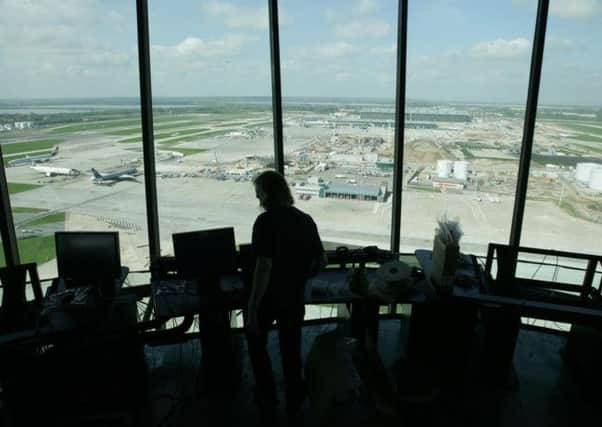Comment: ‘Just culture’ the way for firms to fly


The timeworn question; “If a tree falls in a forest with no-one there, does it make a sound?” makes for some deep philosophical thinking… but only if that’s the way your mind works to begin with. Personally, I’m not really equipped with that type of metaphysical depth. My practical answer is “of course it does”.
Perhaps an observation to make is that in an industry such as aviation, we can’t realistically deny the existence of something just because we weren’t there to hear it or see it.
Advertisement
Hide AdAdvertisement
Hide AdHaving worked in an air traffic control environment in the national air traffic control services (Nats) centre at Prestwick for more than a decade and a half, as a controller and as a safety manager, the phrase “Just Culture” has been engrained in my psyche as a method of learning and improving through open reporting and shared responsibility.
In aviation it’s not a “buzz phrase” but a “way of being”, and it needs to be. The benefits of establishing this type of culture are plentiful. A “Just Culture” is (according to the Civil Aviation Authority’s definition and in line with European Commission Regulation 691/2010) a culture whereby “individuals are not punished for actions, omissions or decisions taken by them that are commensurate with their experience and training but which result in a reportable event; but gross negligence, willful violations and destructive acts are not tolerated”.
I’m convinced that other organisations operate under similar conditions but if not, why not? A “Just Culture” allows you to look deep into the heart of the operation and identify, without recrimination, areas where training or procedures might be improved or where the organisation might facilitate errors rather than prevent them.
What’s more, we can learn these things directly from the experts we employ. It might generate ideas for improvement in manufacturing process, simplify meeting structures or even create different sales markets. At NATS Prestwick we generate in excess of 1200 reports a year and more than 45% of those reports are voluntary.
The suggestions made in these reports along with peer observations of the day-to-day operation and lessons from the wider industry result in improvements to procedures or content for our staff development or resilience training. It’s important that a “Just Culture” is not confused with a “no blame” culture and introspection is required by all of those players operating within the organisation. We should be mature enough to take accountability for our decisions and actions and be practical enough to recognise when we need a greater level of support or additional training.
It is inevitable that we might have to impose training or support on some participants to assist them but by celebrating the strength that people give us and allowing them the latitude to overcome their own vulnerabilities, we can better encourage the level of trust required to build a healthy culture.
A culture doesn’t change by the publication of a process or by flicking a switch. A culture is established over a period of time. As leaders, the decisions you make and the reactions you exhibit have the greatest influence on its guiding principles but a culture is only truly established when an action becomes customary.
Similarly, it is fruitless trying to create a culture of openess and honesty without a mechanism for governing or managing it.
Advertisement
Hide AdAdvertisement
Hide AdThere is a need to create tools or structures through which feedback can be gathered and actions can be tracked, as well as a need to create instruments or governance within which lessons can be learnt and through which improvements can be delivered. Without any of these components, success in establishing the culture might be limited or, at the very least, hard to sustain.
If a tree falling in the forest symbolises the ineffectiveness of unheard opinions or thoughts, then we are in a good place at NATS Prestwick. We have tools that enable us to collect our own safety reports and gather learning from a wide array of sources. We have a scheme and structures that facilitates feedback into the operation.
We also have governance in place to monitor competence, grow capability and intervene positively when it is required. The mechanics are, truthfully, the easy part; maintaining trust and nurturing the culture we have celebrated for a long time is the challenge of the constantly-changing future.
• Thomas Kirkhope is head of safety at NATS Prestwick Control Centre www.nats.co.uk
SEE ALSO